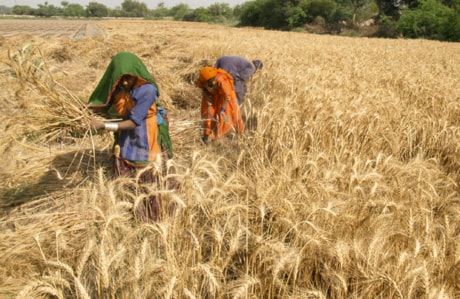Why is India’s future brighter than China’s, especially in a warming world? Because India has more good agricultural land per person.
I first encountered the concept of ‘real population density’ (note the ‘real’) when I was interviewing people in the Netherlands last year about how the country would fare as the global temperature rose. My initial focus was on sea level rise, because 20 per cent of the country is already below sea level.
But the Dutch are confident they have the sea level problem under control, at least for this century.
They are committed to spending large amounts of money to prevent flooding, not by raising the dikes even further, but by “beach replenishment.” When dikes fail, it is generally because they are battered by huge waves — but if you extend the beaches far out to sea (by dredging up sand from even farther out), then the waves do not reach the dikes.
The Dutch sea-level experts were also confident that the Netherlands would not face any problems with food when the temperature rises.
The country is, after all, the second or third biggest agricultural exporter in the world. But it still feels like a very crowded country, so I looked up a few agricultural experts, and they explained the concept of real population density to me.
“It would take a country three or four times the size of the Netherlands to support our present diet, “ said Huib Silvis of the Agricultural Economics Research Institute at Wageningen University. “We import huge amounts of soybean and other animal feed, which we could not produce ourselves. If we had to be self-sufficient, we would not be eating meat.”
The real population density of the Netherlands — how many people there are per square kilometre of farmland — is 2,205. That’s higher than Bangladesh (1,946 people per square kilometre), and it means that the Netherlands, to be self-sufficient in food, would have to feed 22 people from each hectare of land.
So how can the country be the second- or third-biggest agricultural exporter in the world?
Because that’s the cash value of its exports, which are mostly high value-added products. You get a lot more for a tonne of cut flowers than you do for a tonne of potatoes — but you can’t eat cut flowers, and the Dutch could barely feed themselves from their own resources even now.
Global warming makes matters much worse, because it hits food production very hard. The rule of thumb is that the world loses about 10 per cent of its food production for every rise of one degree Celsius in average global temperature.
So the amount of food that is for sale on the international market drops drastically, because some of the big food-exporting countries aren’t producing enough food to export it any more. As the food gets scarce, the price goes up.
Countries that can’t feed themselves either pay huge amounts to buy the limited food still available on the international market (if they have the money), or they go hungry. Which brings us back to India and China.
Almost half the total land area of India is good arable land, whereas only 15 per cent of China is. So although China looks bigger on the map, India has a significantly lower real population density: 753 people per square kilometre of farmland compared to 943 for China.
Add in the fact that China is currently losing about one per cent of its arable land per year to buildings, roads and parking lots, and the numbers for China start to look seriously bad.
They look even worse for the East Asian countries that are already fully industrialized: around 2,900 people per square kilometre for Japan, South Korea and Taiwan. That’s off the scale: nowhere else is that bad apart from some tiny island states like Kiribati, the Maldives and Singapore.
At the other end of the spectrum, look at the big industrialized states in Europe. Italy and Germany are in the 700s, but Spain, France, Sweden and Poland are all in the 300s. So are Brazil, South Africa and Turkey, the most promising of the rapidly developing countries. The lucky ones still have room to grow; the others don’t.
And the uncontested winners in this new lottery? The United States has only 179 people per square kilometre of good agricultural land. Argentina has 144, and Russia has 117.
Canada has 78, and Australia 43. Australia, in other words, has more than half a hectare of good land per person.
This is deeply unfair, given which countries are actually responsible for the global warming. To them that hath, more shall be given. But then, you already knew that the universe isn’t fair.
Gwynne Dyer is a freelance Canadian journalist living in London.
